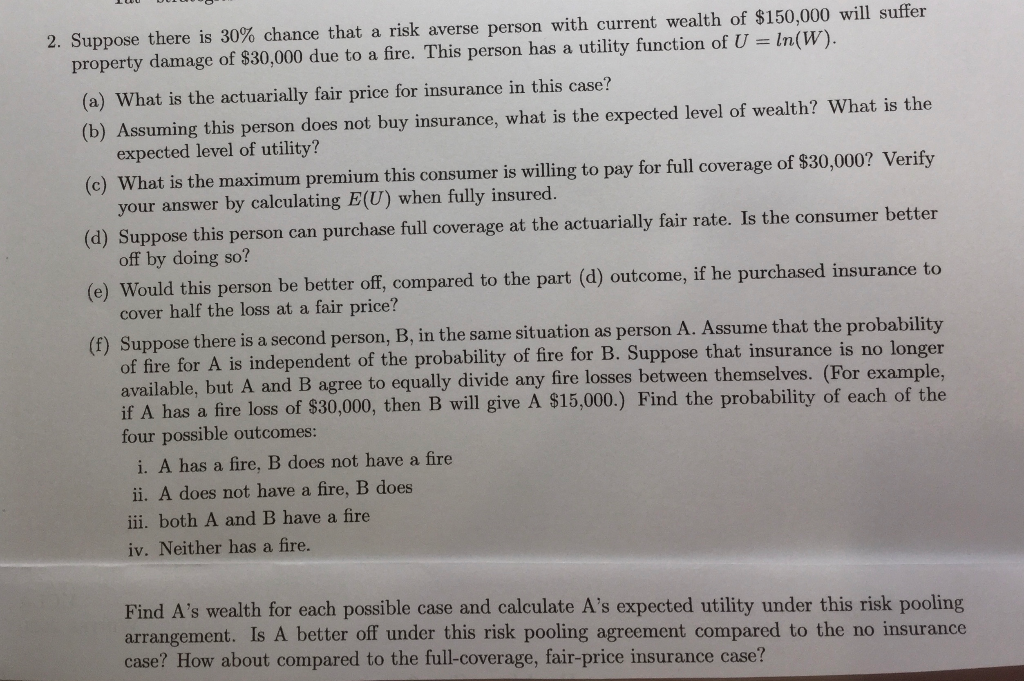
2. Suppose there is 30% chance that a risk averse person with current wealth of $150,000 will suffer property damage of $30,000 due to a fire. This person has a utility function of U = ln(W). (a) What is the actuarially fair price for insurance in this case? (b) Assuming this person does not buy insurance, what is the expected level of wealth? What is the expected level of utility? (c) What is the maximum premium this consumer is willing to pay for full coverage of $30,000? Verify your answer by calculating E(U) when fully insured. (d) Suppose this person can purchase full coverage at the actuarially fair rate. Is the consumer better off by doing so? (e) Would this person be better off, compared to the part (d) outcome, if he purchased insurance to cover half the loss at a fair price? (f) Suppose there is a second person, B, in the same situation as person A. Assume that the probability of fire for A is independent of the probability of fire for B. Suppose that insurance is no longer available, but A and B agree to equally divide any fire losses between themselves. (For example. if A has a fire loss of $30,000, then B will give A $15,000.) Find the probability of each of the four possible outcomes: i. A has a fire, B does not have a fire ii. A does not have a fire, B does iii. both A and B have a fire iv. Neither has a fire. Find A's wealth for each possible case and calculate A's expected utility under this risk pooling! arrangement. Is A better off under this risk pooling agreement compared to the no insurance case? How about compared to the full-coverage, fair-price insurance case? 2. Suppose there is 30% chance that a risk averse person with current wealth of $150,000 will suffer property damage of $30,000 due to a fire. This person has a utility function of U = ln(W). (a) What is the actuarially fair price for insurance in this case? (b) Assuming this person does not buy insurance, what is the expected level of wealth? What is the expected level of utility? (c) What is the maximum premium this consumer is willing to pay for full coverage of $30,000? Verify your answer by calculating E(U) when fully insured. (d) Suppose this person can purchase full coverage at the actuarially fair rate. Is the consumer better off by doing so? (e) Would this person be better off, compared to the part (d) outcome, if he purchased insurance to cover half the loss at a fair price? (f) Suppose there is a second person, B, in the same situation as person A. Assume that the probability of fire for A is independent of the probability of fire for B. Suppose that insurance is no longer available, but A and B agree to equally divide any fire losses between themselves. (For example. if A has a fire loss of $30,000, then B will give A $15,000.) Find the probability of each of the four possible outcomes: i. A has a fire, B does not have a fire ii. A does not have a fire, B does iii. both A and B have a fire iv. Neither has a fire. Find A's wealth for each possible case and calculate A's expected utility under this risk pooling! arrangement. Is A better off under this risk pooling agreement compared to the no insurance case? How about compared to the full-coverage, fair-price insurance case







